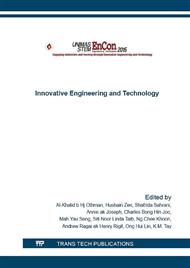p.87
p.94
p.102
p.111
p.119
p.126
p.135
p.143
p.149
Soft Error Mitigation on Dual Rail Latch
Abstract:
A single event upset (SEU) or soft error is defined as a temporary error on digital electronics due to the effect of radiation. Such an error can cause system failure, e.g. a deadlock in an asynchronous system or production of incorrect outputs due to data corruption. With increasing system complexities and integration scale, transistors have become more vulnerable to soft error, necessitating analysis of soft error in circuits, which is the focus of this thesis. Vulnerability of circuits to soft errors is further aggravated by several factors, such as variations in the process and temperatures. Process variations are inaccuracies in the manufacturing process which may lead to deterioration of circuit performance and increase in power consumption. Temperature variation degrades the threshold voltage, carrier mobility and velocity saturation of transistor. As a result of degrading carrier mobility, the drain current becomes lower thus increasing the sensitivity of the node to SEU.
Info:
Periodical:
Pages:
119-125
Citation:
Online since:
April 2016
Authors:
Keywords:
Price:
Сopyright:
© 2016 Trans Tech Publications Ltd. All Rights Reserved
Share:
Citation:


